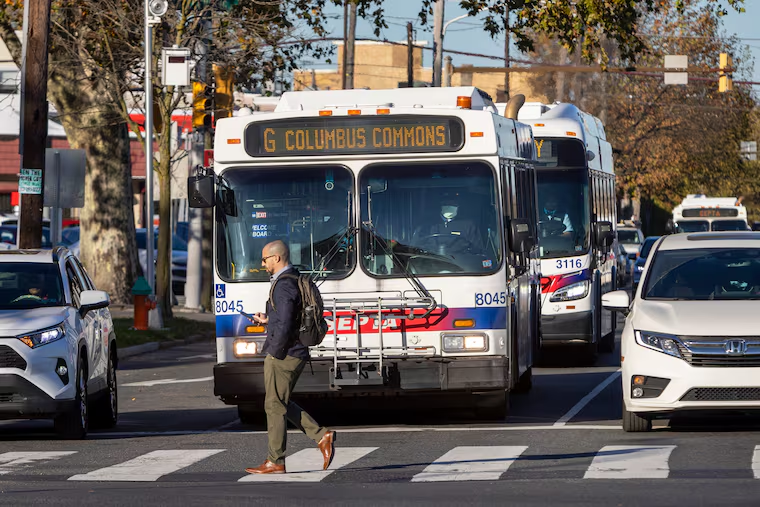Highlights from our Reddit AMA on SEPTA’s Bus Revolution
With SEPTA set to unveil the latest draft of its bus system redesign, Inquirer transportation Thomas Fitzgerald answered questions during a Reddit AMA with r/Philadelphia.

With SEPTA set to unveil the latest draft of its bus system redesign, Inquirer transportation Thomas Fitzgerald sat down and answered questions during a Reddit AMA with r/Philadelphia. Here are some of the highlights. Some questions and answers have been edited for length, clarity, and tone.
Was there an assumption during the process that the El is an equal alternative to the bus?
A bit more than a third of SEPTA bus travelers currently transfer between modes; initially SEPTA wanted more. The idea was that rail slices faster through the city than buses in traffic, which it does. However, there was an uprising among the public: People did not want to be “forced,” as some said, onto the El, particularly at odd hours. They scaled those transfers back some.
Why didn’t SEPTA do significant consolidation of stops?
They are saying that they want to get the new routes and changes to existing ones approved now and deal with consolidation of stops later. It’s a fraught topic for many riders.
Is there a stop consolidation timeline?
The timeline is fuzzy, nothing specific. They say they have to evaluate according to all these variables, and it is difficult, but it’s a good question and I’ll press them.
Who are the consultants in charge of the redesign? Are they local?
The consultants are Nelson Nygaard. It has offices in eight cities I believe, none of them Philly. They have a lot of experience with bus route changes elsewhere.
Does Bus Revolution include any plans or funding for automated enforcement for violations of bus-only lanes?
SEPTA has been testing a closed circuit auto enforcement on Chestnut and Walnut bus lanes with mounted cameras assisted by AI. No tickets yet, but warnings have been mailed to violators. On city streets, it’s probably easier, but it’s unclear if a City Council bill is needed. PennDot streets — aka state highways — almost certainly would require authorization by the legislature. Early on, they caught a raft of violators. I have not seen recent numbers. It started in June.
How involved has City Council been in the process?
City Council channeled constituents who hated the idea of changes, conducted hearings. It put political pressure on SEPTA for changes. Legislatively, they did not interfere.
Assuming no hiccups from here, when are the changes likely to go into effect?
The changes are supposed to begin in the spring of 2024, though I am loath to say that’s set in granite for ... obvious reasons. They’ve talked about stages, not a tear-the-Band-Aid-off approach [as was done in Houston].
How were third-party transit options considered in regard to route/stop changes?
It’s not clear how Uber/Lyft factored in, but you ask a fine question. SEPTA is creating eight micro-transit zones in areas of the suburbs where fixed-route service is fairly low. They’ll be small buses and on demand. Some details to come. Schools and parents were vocal about wanting one-seat rides for students, and changes were made between drafts.
There are some routes that are incredibly long and suffer from backups along the route or too few buses spread over the route during off hours. (My go-to example is the 47.) Was there any discussion about splitting routes like this into smaller, more manageable pieces?
Yes, several were split up into more manageable pieces. For instance, several parts of different routes were shaved off to create the new 83, which will be crosstown service for the Northeast — from Torresdale Station to Willow Grove Mall. For background, SEPTA has 125 bus routes currently, and some of the slowest bus speeds in the United States. The initial proposal cut it down to 99. After another two rounds of engagement, they are up to ~106. Of SEPTA’s 13 busiest routes — with 10,000+ boardings per day — seven have average speeds of less than 10 mph.
Why can’t we get a direct bus from Philly to the airport?
SEPTA is rolling out a variation of the 37 that will go to the airport, the place with the highest demand along the route.